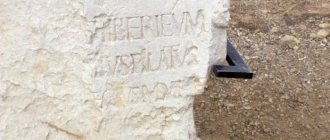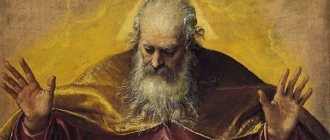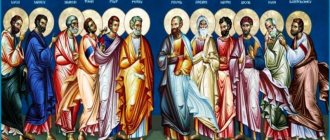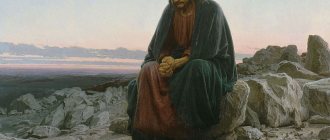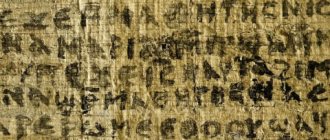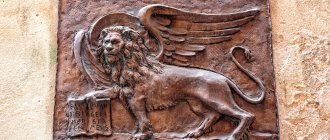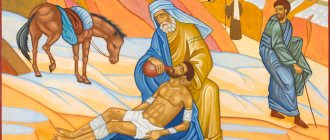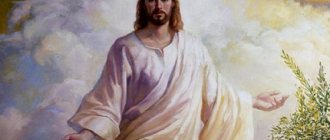The main and main event of the entire Christian world is the resurrection of our Lord Jesus Christ. Without this miracle there would be nothing - neither our salvation, nor eternal life, nor the Christian faith itself. It is the resurrection of the Son of God from the dead that is the basis for the fact that life in paradise can be available to each of us. However, the resurrection of Christ is not the only thing in the Gospel. We know about Lazarus, who was resurrected after 4 days in the grave cave, we know the example of the resurrected daughter of Jairus. The Gospel also testifies to those who rose from their graves after the crucifixion of Christ. So why did the resurrection of Jesus become such a turning point in the entire history of mankind? What does this miracle give us today?
How the Savior was resurrected
All four Gospels describe in sufficient detail the events of the sufferings on the cross, the death of Christ and His subsequent resurrection. So, Jesus died on Friday, at about three o'clock in the afternoon, before the celebration of the Jewish Passover.
Through the death of Christ, man was reconciled with God
One pious and wealthy Israeli, Joseph of Arimathea, received permission from Pilate to remove the body from the Cross and bury Him in a cave. Joseph had his own cave, hewn out of the rock, for his own burial, however, out of great love for Jesus, he decided to bury Him there. The Savior's body was removed from the Cross and anointed with incense, as required by the Jewish funeral traditions of that time. After this, the prepared body was wrapped in clean linen and laid in a cave.
Interesting! The same cloth that was wrapped around the holy body of our Lord Jesus has still been preserved and represents one of the most famous and revered shrines of the entire Christian world - the Shroud of Turin.
Joseph and Nicodemus, who helped him, were part of the Sanhedrin - that was the name of the supreme Jewish court. At the same time, they accepted Christianity and secretly followed the teachings of Christ. Having placed the body of Christ in the cave, they blocked the entrance with a huge stone. Of course, such preparations required much more time, but those who buried Him were in a hurry - the Jewish Passover would begin very soon.
Status of Christ
So what happened to Christ's human status? Some of us think that Jesus ceased to be a man as soon as he received recognition and exaltation. But this is not supported in the scriptures. Even though he has reached the greatest heights, he is still considered human. He is the only mediator between God and humanity. At first he was a man of flesh and dust. And then he became Lord from heaven. Jesus is also the life-giving spirit. But this does not mean that he is not a person and does not have a fleshly body. Christ was among the angels, and at the same time he was mortal; "the spirit that saves life."
He was merciful to his brothers and a devoted High Priest. He occupies a status no lower than that of the angels and even higher than theirs. But at the same time, Christ remains human. In a human body, he resignedly accepted martyrdom on the cross. For this he was exalted by God above every name. That is why he ranks higher than the angels. This gives him the authority of God. Even having risen above everyone, he does not cease to bear his human name “Jesus” and to be a man. Another name given to him is Jehovah.
Appearances after the resurrection
On the very first day after the resurrection from the dead, Jesus Christ began to appear to his disciples and all his faithful. According to legend, His Mother was the first to see the risen Savior. By His appearance He consoled her immeasurable maternal grief over her executed Son.
Then the living Christ was seen by the apostles, who were hiding from persecutors and enemies of Christianity in different places. The rest of the myrrh-bearing wives also saw Him, striving early in the morning to His tomb. Of the apostles, the first to receive the appearance were Peter and the disciples Cleopas and Luke.
Most of the apostles gathered in the Upper Room of Zion (the place where the Last Supper was celebrated) to secretly discuss the message of the resurrection. Then the Lord appeared to all of them. Absent from this meeting was the Apostle Thomas, who would later be popularly called an “unbeliever.” He received this nickname because he refused to believe the news of a miracle until he personally saw the Lord and touched His wounds with his hands. Then Jesus appears to the apostles once again and allows Thomas to be convinced of the truth of what happened and the reality of the wounds on His body from the crucifixion.
Appearance of Christ to Mary Magdalene after the Resurrection
After His resurrection, the Savior remained on earth for 40 days in a renewed and transformed body. During this time, He appeared to many hundreds of His disciples and followers. He instructed the apostles in His teaching so that they could preach the Gospel throughout the whole Earth, as was commanded. After 40 days, the Lord, together with his incorruptible body, ascended to Heaven, where he remains next to his Father. This day is celebrated in the liturgical calendar as the Great Twelfth Feast of the Ascension of the Lord. This day ends the stay of Christ on earth as the God-man. From now on, every sincerely believing Christian has every opportunity to inherit eternal life, following the example of Christ himself.
Important! The most important thing that the Savior did while on earth was victory over death.
short biography
Jesus Christ is a spiritual leader with level 52 of development. Born January 7, 4 BC. He lived 158 years and passed away on May 27, 154. He was incarnated for a great mission - to create a new teaching, a new faith, to bring the Law of Love and save millions of human souls.
After the crucifixion and resurrection, the Higher Powers forbade Jesus to preach; he completely fulfilled his mission.
There are alternative sources that, without refuting the biography, somewhat clarify and expand ideas about what really happened to Christ. Thanks to these revelations (communications with Higher Powers), we can find out in detail how the crucifixion of Jesus Christ took place and on what day he was resurrected.
Version two: lightning struck the crypt.
Or maybe try to find a version of what happened in the Bible? Here, for example, is what Matthew says:
| After the Sabbath had passed, at dawn of the first day of the week, Mary Magdalene and the other Mary came to see the tomb. And behold, there was a great earthquake , for the Angel of the Lord, who descended from heaven, came, rolled away the stone from the door of the tomb and sat on it; his appearance was like lightning , and his clothes were white as snow; fearing him, the guards trembled and became as if they were dead; (Matthew 28:1-4) |
So maybe Mary saw not an angel like lightning, but lightning that “came down from heaven” into the crypt where Jesus lay? Moreover, then an earthquake followed - if lightning struck a corpse lying in the crypt, the corpse turned into gases, which exploded and threw out the stone with a roar. Naturally, even battle-hardened soldiers would have run away from there.
Thus, we have at least two plausible explanations for why Jesus' body was not found in the crypt. Moreover, the fact that there is no corpse does not make the resurrection a fact. In this case, the resurrection of the deceased is a possible, but far from the most plausible explanation.
Crown of Thorns of the Savior
According to Church tradition, Saint Queen Helena received the Crown of Thorns as a gift from the Jerusalem community during her pilgrimage to the Holy Land, after which the shrine was kept in Constantinople.
A literary source testifying to this is a record from 1201 made by the sacristan of the Church of the Mother of God of Pharos, Nicholas Nesaritus, who was the custodian of the most important shrines of the empire and had complete knowledge about them. He gives a detailed description of the Crown, and also, along with other authors, testifies that the Crown of Thorns bloomed annually.
After the capture of Constantinople by the Crusaders, many of its shrines came to Western Europe, where after some time the Crown of Thorns was bought by King Louis IX of France. Now the Crown is kept in the Cathedral of Notre Dame in Paris, and its 64 thorns are in various temples and monasteries of the Christian world.
Easter is the greatest Christian holiday
The day of Easter changes every year. The procedure for calculating the date was determined in the 3rd century.
When calculating the date of Easter, 4 conditions must be met:
- the day of celebration should only be after Passover;
- Easter is celebrated on the day of the first resurrection after the full moon;
- Easter cannot be celebrated before the spring equinox;
- this day cannot be celebrated after May 8th.
On this holiday, and throughout the period until the Ascension, Christians greet each other with the words “Christ is Risen!” and answer, “Truly He is Risen!”
The main holiday prayer is the troparion of the Resurrection:
“Christ is risen from the dead, trampling down death by death, and giving life to those in the tombs.”
Christians believe that:
1 Thesal. 4.16-17
“The Lord himself, with a proclamation, with the voice of the Archangel and the trumpet of God, will descend from heaven, and the dead in Christ will rise first; Then we who are left alive will be caught up together with them in the clouds to meet the Lord in the air, and so we will always be with the Lord.”
By leaving a comment, you accept the user agreement
Archeology and the New Testament
Excavations carried out in Jerusalem have revealed a number of confirmations of the Gospel story. Thus, back in the 19th century, the pool of Bethesda was found, which is discussed in the Gospel of John (see John 5:2). In 1961, in the ruins of Caesarea in Palestine, an ancient city located on the Mediterranean coast of modern Israel, the so-called “Pilate Stone” was discovered - a limestone block on which the inscription was preserved:
Photo by Marion Doss/Flickr
[…]S TIBERIEV
[PO]NTIVS PILATVS
[PRAEF]ECTVS IVDA[EA]A
This means in translation "... Tiberium. [Pontius Pilate. [Pre]fect of Judas."
In this case, Tiberium is the name of a public building built by Pontius Pilate and dedicated to the Roman Emperor Tiberius, while the city where the inscription was found was named after his predecessor Caesar Augustus - Caesarea.
Also relatively recently, in the 90s of the 20th century, during excavations in Jerusalem, the burial of the high priest Caiaphas, one of the characters in the gospel events, was discovered.
Some time ago, skeptics disputed the gospel account, saying that the Romans tied the condemned to crosses rather than nailing them to death, as the Bible implies. It was quite difficult to refute this, due to the fact that nails were usually not left in the bodies of those executed - partly due to the high cost of iron, partly due to the fact that objects used in executions were often used for superstitious “healing”. However, in 1968, in Givat HaMivtar, a northern suburb of Jerusalem, the burial of Yehohanan, a Jew executed by the Romans at the age of about 30, was found. A huge nail was stuck in the leg bones, so bent (probably due to a knot in the wood of the cross) that they could not pull it out. This discovery showed that the crucifixion was exactly as described in the Bible.
Another depiction of the crucifixion is a caricature discovered in 1857, scratched into the wall of an ancient barracks near the Palatine Hill in Rome. The drawing schematically depicts a crucified with the head of a donkey and a man bowing before him, and the inscription in rough Greek says: “Anaxomenes prays to his God.” Obviously, some Roman legionnaire ridiculed his Christian colleague in this way.
During excavations in Corinth in 1929, archaeologist T. L. Shear discovered a sidewalk with the inscription ERASTUS PRO: AED: S: P: STRAVIT (“This sidewalk was laid at his own expense by Erastus, the custodian of public buildings”). Apparently, this is the same “Erastus, the city treasurer”, whom the holy Apostle Paul mentions in his letter to the Romans (see 16:23).
More recently, in 2008, archaeologists discovered a cave that, by many indications, is the first Christian church discovered to date. The cave is located under the ruins of the ancient church of St. George, which was erected around 230 AD in the city of Rihab, in what is now Jordan.
In the cave, archaeologists discovered seats for clergy, an apse and an altar. According to Abdul Kader Hussain, head of the Rihab Center for Archaeological Research, it was used for worship before 70 AD, possibly starting in 33 AD, when Christians began to be persecuted in Jerusalem (The Jordan Times - Ed.)
Christ has risen from the dead!
The women were shocked by what they saw. Christ is risen! Is this really possible? They returned from the coffin overwhelmed with a feeling of bewilderment and delight. And suddenly, on the way back, the risen Christ Himself appeared before them. The women were overjoyed to see their Lord again. And Jesus asked them to go and tell the disciples about His resurrection.
When the women came to the disciples of Christ and told them about everything they had seen, they did not believe them. They were still deeply impressed by the terrible picture of the crucifixion of Jesus Christ on the cross. And now they were in deep sadness and feared for their own lives. Only two of the disciples, Peter and John, took the women’s words seriously and immediately ran to the tomb to check everything for themselves. When they arrived there, they were surprised to find that the coffin was indeed empty.
